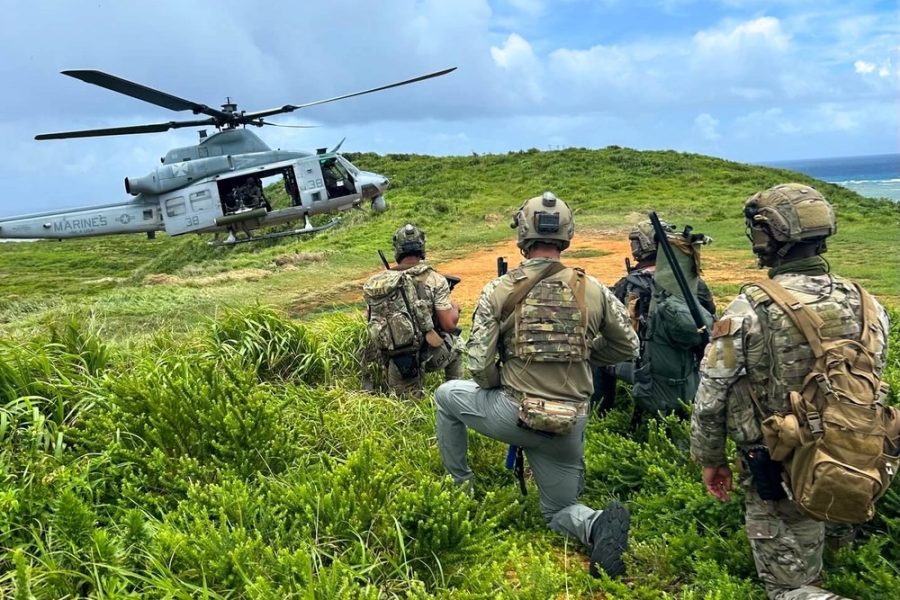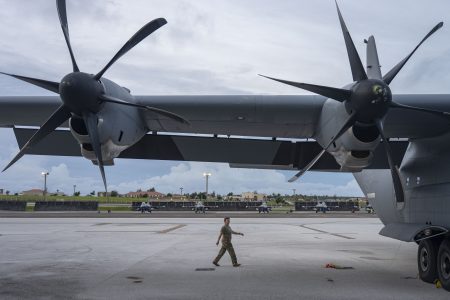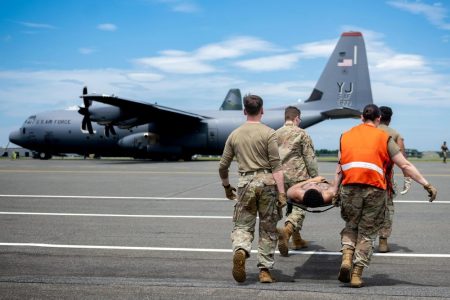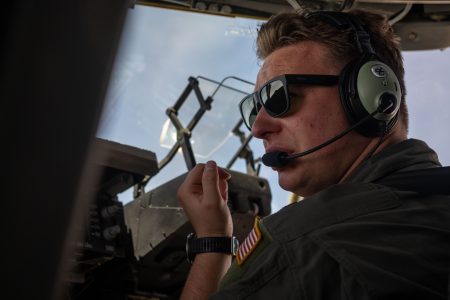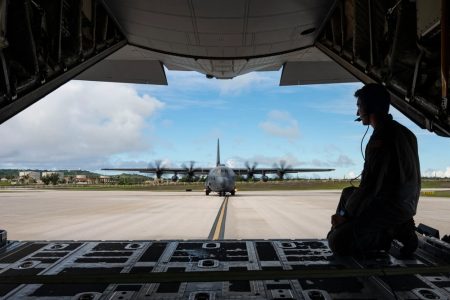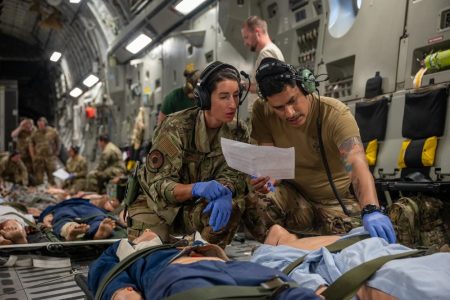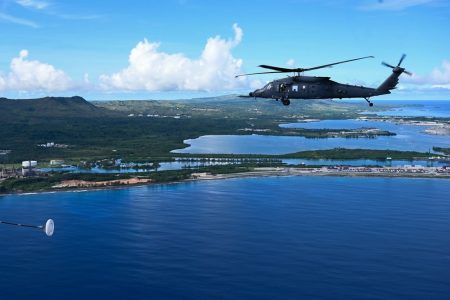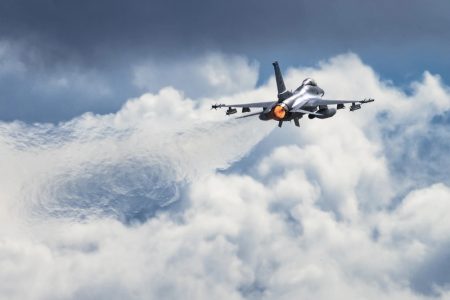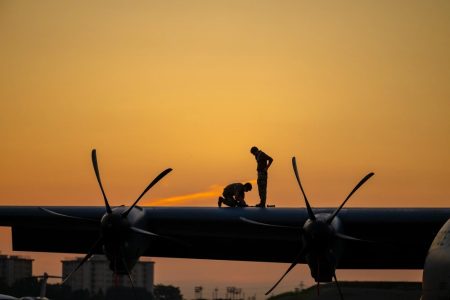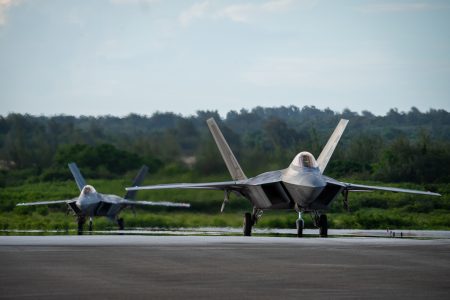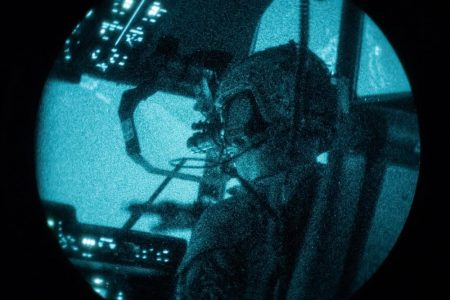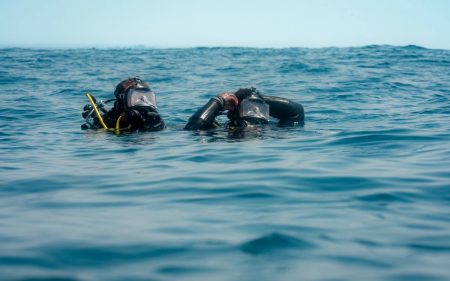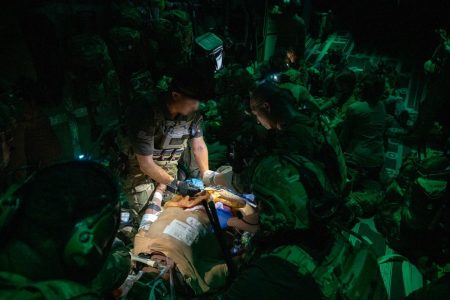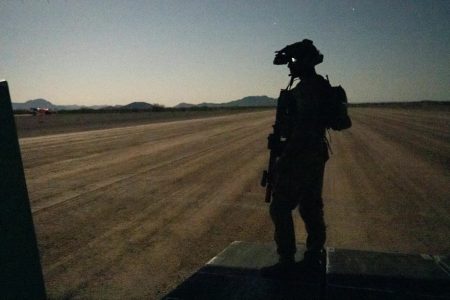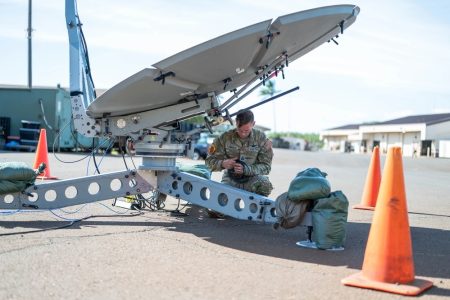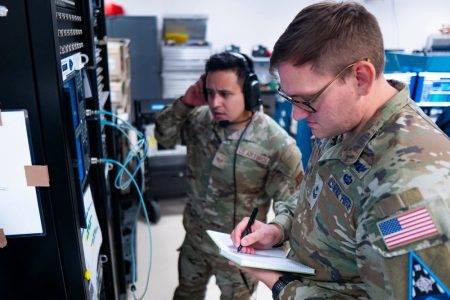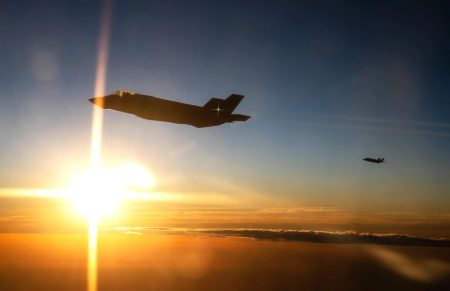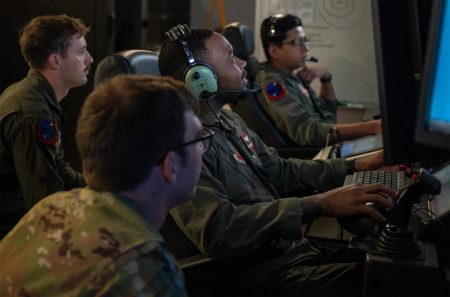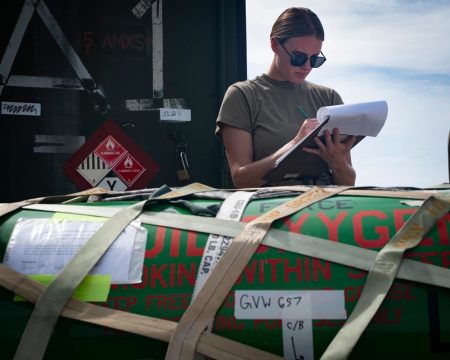The Air Force and Space Force just wrapped up an ambitious hemisphere-spanning exercise, the likes of which have not been seen in a generation, said Air Force Chief of Staff Gen. David Allvin.
“As intended, we stressed the system by having the largest scale exercise in the Pacific since the Cold War,” he said in an Aug. 21 press release. “We validated our ability to sustain operations, deploy and redeploy at scale, and now must follow through on lessons learned.”
Called the Department-Level Exercise, the series of exercises involved about 12,000 troops and 500 aircraft around the world and ran from early July through mid-August, including five interlocking drills that touched on nearly every aspect of the Air Force’s and Space Force’s capabilities.
Through the exercise Mobility Guardian 2025, a fleet of tanker and transport aircraft brought the troops, fuel, equipment, and supplies across the Pacific that allowed Pacific Air Forces to put on its drill Resolute Force Pacific, or REFORPAC, where fighter jets, bombers, and other aircraft flew simulated combat missions across the region.
Later on, Air Force commandos practiced seizing airfields and treating patients in Air Force Special Operations Command’s exercise Emerald Warrior 25.2, while command-and-control Airmen at Kirtland Air Force Base, N.M., tested new ways of controlling the airspace as part of Bamboo Eagle 25-3. Meanwhile, about 700 Guardians practiced electromagnetic, cyber, and orbital warfare in the exercise Resolute Space, the Space Force’s largest service-wide exercise.
“The Space Force delivered at an unprecedented scale alongside our allies and partners,” Chief of Space Operations Gen. Chance Saltzman said in the Aug. 21 release. “During Resolute Space, Guardians trained against realistic, threat-informed aggressor forces while also supporting nine other concurrent exercises around the world.”
Here are some of the highlights from each component of the DLE.
Mobility Guardian 25
Two years after the ambitious Mobility Guardian 23, Air Mobility Command, which oversees Air Force transport and tanker aircraft, outdid itself by moving more than 7,000 troops and 5,000 tons of supplies and equipment into theater in a week, a feat that involved some 85 mobility aircraft.
While C-17 and C-130 transport aircraft criss-crossed the Pacific hauling troops and supplies, the command also launched a rare 10-ship formation of tankers from Guam to refuel six C-17s carrying about 400 paratroopers from Alaska to Australia for a parachute jump there, testing planners’ ability to bring in aircraft from around the world and launch them on two days’ notice.
Besides hauling and tanking, a key part of MG25 was testing out new technology to keep mobility crews connected to secure internet mid-flight, a critical tool for helping crews adjust to changes literally on the fly.
“We like to say flexibility is the key to airpower, right? That flexibility, the agility to adjust to a changing environment … gives us a great ability to maneuver,” AMC boss Gen. John Lamontagne told Air & Space Forces Magazine in July. “I think it all comes down to communication.”
REFORPAC
The mobility troops helped set up Pacific Air Forces to run combat drills at scale across the region. F-16 fighter jets from Washington, D.C., joined Alaska-based F-22s and F-35s and North Dakotan B-52s on Guam and nearby islands, while rescue helicopters and transport planes from New York stood alert for real-world rescue missions in Japan.
The exercise saw the new F-15EX Eagle II fighter fly missions; multiple platforms drop live munitions in the western Pacific; rapid airfield damage repair drills; and F-35s fly long missions back-to-back.
“Monday will be a defensive counter-air day, Tuesday we’re doing offensive counter-air, Wednesday we’re doing maritime strike, Thursday we’re doing defensive counter-air again,” Lt. Col. Erik Gonsalves, commander of the component from the F-35-flying 355th Fighter Squadron, said in a July 30 press release.
Normally based in Alaska, Gonsalves said it built confidence for fighter pilots at Guam to fly 700 miles across the Pacific to meet a tanker, perform a mission, and then fly all the way back while dodging thunderstorms and bad weather.
“That puts a lot of critical decision making in the hands of these young fighter pilots that are out there ultimately increasing their overall airmanship and making us a more ready and lethal force,” he said.
Emerald Warrior 25.2
As jets soared across the western Pacific, Air Force Special Tactics teams boarded Royal Air Force A400M Atlas transport aircraft to practice free fall parachute jumps at Marine Corps Air Station Yuma, Ariz.
An Air Force special operations surgical team also teamed up with Czech Republic special forces to practice responding to mass casualty events and care for patients in remote environments, on a flying MC-130J transport, and even on a boat.
“Here, we build trust, refine communication capabilities, and align our tactics so we’re ready to act decisively and effectively,” Lt. Col. Tyler Rhyne, the special operations task group commander, said in an Aug. 11 press release.
Bamboo Eagle 25-3
Maintaining command and control over more than 100 aircraft operating from more than 15 locations from Arkansas to Hawaii was the top goal for Bamboo Eagle 25-3, particularly for the Distributed Mission Operations Center at Kirtland Air Force Base, N.M., where Sailors, Marines, Soldiers, Airmen, and Guardians worked together to manage everything from MQ-9 drones to Army air defenses.
The DMOC can bring in live, virtual, and constructive features to enable training events that would not be possible in the real world.
“LVC training [requires] participants to work across services to balance competing priorities, manage limited resources, and respond to real-time threats,” Lt. Col. Sajjad Abdullateef, director of operations for the 705th Combat Training Squadron, said in an Aug. 19 release. “A strike package might rely on ISR [intelligence, surveillance, and reconnaissance] from one unit, refueling support from another service, and cyber effects, all demanding a unique level of trust and alignment.”
Resolute Space 2025
Just like how Air Force aggressors pretend to be enemy aircraft in practice dogfights, the Space Force sent aggressors from three squadrons to challenge Guardians in cyber, orbital, and electromagnetic warfare during this exercise.
The aggressors “introduce factors such as interference that could disrupt satellite communication, irregularities that affect navigation signals, and cyber actions that strain network defenses,” according to a July 30 press release. “These efforts are built into the overall exercise scenario to mirror the types of obstacles Guardians could face in conflict.”
The training happened in part thanks to units such as the 25th Space Range Squadron, which brought a trailer called a Transportable Range Operations Center to Hawaii to “deliver electromagnetic effects in a controlled setting without impacting other spectrum users,” according to the Space Force.
“The whole idea of this type of exercise is to place maximum pressure on our operational and command and control functions to understand where we need to improve,” Royal Australian Air Force Group Captain Darrell May, deputy commander for U.S. Space Forces Indo-Pacific, said in an Aug. 6 release. “It provides us the opportunity to try different techniques, planning processes and structures to see what works and then get better from it.”
